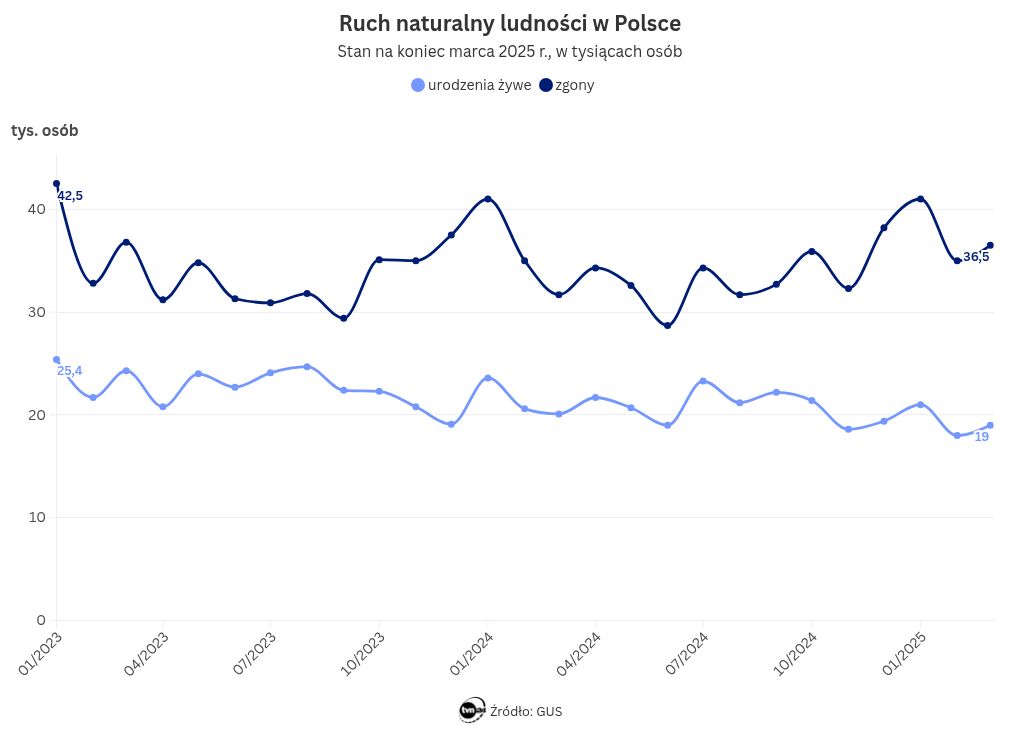Biznes Fakty
The population of Poland and people of working age. Disturbing data from the Central Statistical Office

According to the Central Statistical Office (GSU), the working-age population has decreased by 151 thousand over the past year. This trend is attributed to an aging population and a diminishing number of young individuals entering the workforce.
In 2024, the percentage of individuals of working age dropped to 58.2%, down from 58.4% in 2023, as reported in the document „Population. State and structure and natural movement in territorial cross-section in 2024” by the Central Statistical Office.
Fewer individuals of working age
The working-age population totaled just below 22 million, which is 151 thousand fewer than the previous year. This decline results from the aging demographic and the movement of numerous generations born in the 1960s into the post-working age category, alongside a reduction in the number of 18-year-olds entering the workforce. Since 2010, the working-age population has decreased by nearly 3 million individuals, according to the Central Statistical Office.
In 2024, the number and proportion of the immobile working-age population rose to 23.4%, up from 23.0% in 2023.
Compared to 2023, the percentage of the mobile working-age population fell by 0.6 percentage points, fluctuating around 40% from 1990 to 2014, and reaching 34.8% at the end of 2024.
The proportion of individuals in the post-working age category increased to 23.8% from 23.3%.
FULL REPORT >>>

Population in Poland
The Central Statistical Office reported that Poland’s population at the end of 2024 had decreased by 147 thousand compared to 2023, totaling 37 million 489 thousand. This equates to 39 fewer individuals for every 10 thousand people. Additionally, it was noted that the population has been on a decline since 2012.
Furthermore, it was calculated that the old-age dependency ratio stands at 141, indicating that for every 100 children aged 0-14, there are 141 individuals over the age of 65.
The publication suggests that no significant changes to ensure stable demographic growth are anticipated in the near future. The authors indicate that this is due to extremely low birth rates, a high number of deaths, and a decline in marriages compared to 2023. Recent demographic changes have largely been driven by natural increase, which has been negative since 2013. In 2024, the Central Statistical Office reported that births were lower than deaths by nearly 157 thousand, resulting in a natural increase rate (per 1,000 people) of -4.2, which is a decrease of 0.6 percentage points compared to the previous year.
At the same time, it was emphasized that the number of deaths increased in the previous year, surpassing the average annual figure since 1970 by almost 32 thousand (409 thousand compared to 377 thousand). „The unfavorable conditions regarding mortality and fertility in 2024 contributed to the low level of natural increase,” it was reported.



